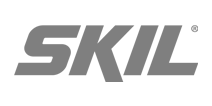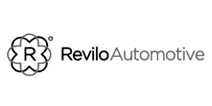
Examples of trust indicators that help increase conversion rates
Website credibility reassures customers that they can trust your brand. Google insists upon these credibility/reassurance factors if it’s going to rank you highly. Credibility leads to more traffic, more conversions and more profit for your company.
So, what is it – and how can you get some? And what’s it got to do with CRO marketing?

What is website credibility?
Credibility is the quality of being trusted and believed in. Website credibility shows customers that your site is trustworthy and safe to use.
Due to scams and fly-by-night pop-up sites, plus the increasing volume of phishing attacks and online data breaches, people are more cautious about who they will buy from or share their details with.
This makes it imperative for legitimate businesses to prove they are the real thing, that they care about their customers, and they can be trusted.
To give your website credibility you can add trust indicators, which help customers feel more comfortable on your site and help them reach their goal.
Credibility increases website conversions
Credibility converts visitors into customers. If you want customers to make a purchase, they need to trust you. If a customer doesn’t trust an element of your website, they aren’t going to make a purchase. This results in fewer conversions, which means less revenue.
How can I improve my website’s credibility?
Trust indicators come in many different forms but they all share the goal: to help customers trust your site.
As a starting point, here are some examples that build trust on your site:
- Trust seals – Adding trust seals such as a Visa/Mastercard, Verisign or PayPal logo to your checkout to show that you’re safe to buy from.
- Policies (delivery, return, warranty) – Displaying clear policy pages to show detailed delivery, returns and warranty information up front, so customers know that, if they have an issue with your product, you’ll help them resolve it.
- Visible contact details – Customers like to know they can contact you, so don’t hide contact details away. In most cases, make sure you display a phone number, email and a business address.
- Social proof – Letting your customers speak for you about your product is a great way to earn new customers. Showing reviews and testimonials next to your products will help users understand what other people think of your product.
- Design – First impressions count. The better your website looks, the more your customers will trust the site. Remember that your site needs to be user-friendly as well.
- Informative website copy – While customers might not read all the copy on your site, it still creates a sense of trust having the information there. It also matters to have the right information, if customers don’t find out what they want about the product they’re more likely to leave without converting.
- Company association – Some of the companies you work with may already have good credibility. Display this connection on your website to show potential customers you’re reputable too.
- Site speed/loading time – Google – and visitors – expect your site to be fast. For every second a customer waits, the more they’ll have that they aren’t on a legitimate site – or click onto a competitor site out of boredom.
Where should I put trust indicators?
There should be elements of trust across your site, from the homepage all the way through to the checkout. But don’t overdo it, moderation is key. Too many trust points could feel like a scam site. The trust indicators have to be authentic.
What works for one customer won’t work for another, by understanding your customer you’ll find out what works for your site.
You can look at other websites and see what trust indicators they have on their website. Test adding trust points to your website to assure customers that you are legitimate.
But the best way to find out what works and what doesn’t is to test which indicators to use through CRO marketing.
What is CRO?
Conversion Rate Optimisation is a process of continuous optimisation to improve underperforming elements of your website. By understanding your customers better, you can provide them with a better experience, helping them to achieve their goals more efficiently.
By testing different ideas against each other you’re able to implement the idea that your customers like the most. This leads to increased website conversions, which means more revenue.
Measure success
Creating trust is a major element of increasing your website conversion rate and an integral part of CRO marketing.
We use A/B testing to test trust elements throughout a site to make sure that the changes we make are the right ones. How do we know that? They increase conversions.
Takeaways
- Credibility converts visitors into customers.
- If a customer doesn’t trust an element of your website, they aren’t going to make a purchase.
- Creating trust is a major element of increasing your website conversion rate
- Test adding trust points to your website using A/B testing to increase conversions
If you’d like to talk to us about CRO marketing, please get in touch to talk it over.
Photo by John Schnobrich on Unsplash
Scrapbook
We have a lot to talk about.Door4 opinions and insight - exploring performance marketing, communications and optimisation.











